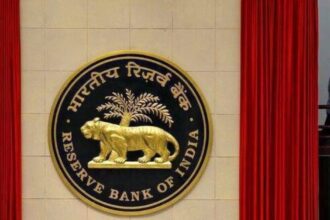In order to create direct rail connectivity between Bhutan and the Indian states of Assam and West Bengal, India has announced two major cross-border railway projects. The measures, which were announced by Foreign Secretary Vikram Misri and Railways Minister Ashwini Vaishnav, amount to a combined investment of about Rs 4,000 crore and are a significant step towards enhancing bilateral relations between the two nearby countries. These projects are part of India’s Rs 10,000 crore developmental assistance package for Bhutan’s 13th Five Year Plan, which runs from 2024 to 2029, and are the result of pledges made during Prime Minister Narendra Modi’s March 2024 visit to Bhutan.
Project overview and technical specifications
The first railway line will connect Kokrajhar in Assam with Gelephu in Bhutan. It will be 69 kilometers long and cost Rs 3,456 crore. There will be six stations, two important bridges, 29 major bridges, 65 minor bridges, two goods sheds, one flyover, and 39 underpasses along this line. The work is expected to be done in four years. The second project will connect Banarhat in West Bengal with Samtse in Bhutan. It will cost Rs 577 crore and cover 20 kilometers. The shorter route will have two stations, one big bridge, 24 small bridges, one overpass, and 37 underpasses. It is expected to be done in three years. Both railway lines will be fully electrified and have modern infrastructure that can support advanced train services, such as Vande Bharat trains with cutting-edge signaling systems.
Socio-economic impact
In addition to making travel between the two countries easier, these railway projects will generate a large number of job opportunities both during the construction and operation phases. The connectivity helps Bhutan achieve its development goals, especially the development of Samtse as an industrial center and the conversion of Gelephu into a Mindfulness City. Plans to train Bhutanese citizens in railway operations are part of the initiative, which aims to foster knowledge transfer and skill development. Local communities will have better access to previously inaccessible markets, healthcare, education, and economic opportunities.
Economic and trade benefits
With almost 80% of all trade, India is currently Bhutan’s biggest trading partner. Because rail cargo movement is far more cost-effective than road transport, these railway connections will significantly cut down on transportation time and expenses. Dolomite, ferro-silicon, quartzite, and stone chips will be easier to export from Bhutan thanks to the Samtse line. Improved logistics will increase the effectiveness of the supply chain, draw in investments to border areas, and stimulate economic activity in the northeastern states of India, all of which will have a multiplier effect on regional development.
Strategic significance
These initiatives have significant geopolitical significance in enhancing India-Bhutan bilateral ties in addition to their economic advantages. In response to worries about regional influence, Foreign Secretary Misri clarified that no third country is involved. In addition to promoting the Act East policy and enhancing connectivity in northeastern India, the projects show India’s dedication as Bhutan’s main developmental partner. In addition to fostering regional integration and shared prosperity, this infrastructure development respects sovereignty.
Environmental and technical considerations
With thorough environmental impact assessments carried out to safeguard the ecologically delicate Himalayan region, the projects demonstrate India’s expanding proficiency in railway infrastructure. Complete electrification is consistent with carbon emission reduction targets and sustainability goals. Multiple bridges, underpasses, and contemporary signaling systems are included to guarantee safety standards while causing the least amount of disturbance to current transit networks and wildlife corridors.
The Rs 4,000 crore cross-border railway projects between India and Bhutan are a game-changer for regional development and bilateral cooperation. These rail connections will support Bhutan’s strategic development objectives, improve trade logistics, generate jobs, and radically increase connectivity. The projects enhance South Asian regional integration and reaffirm India’s position as Bhutan’s main developmental partner. These railway lines will act as stimulants for economic expansion, strengthen interpersonal relationships, and establish long-term prosperity in the border areas of both countries over the course of the next three to four years.




